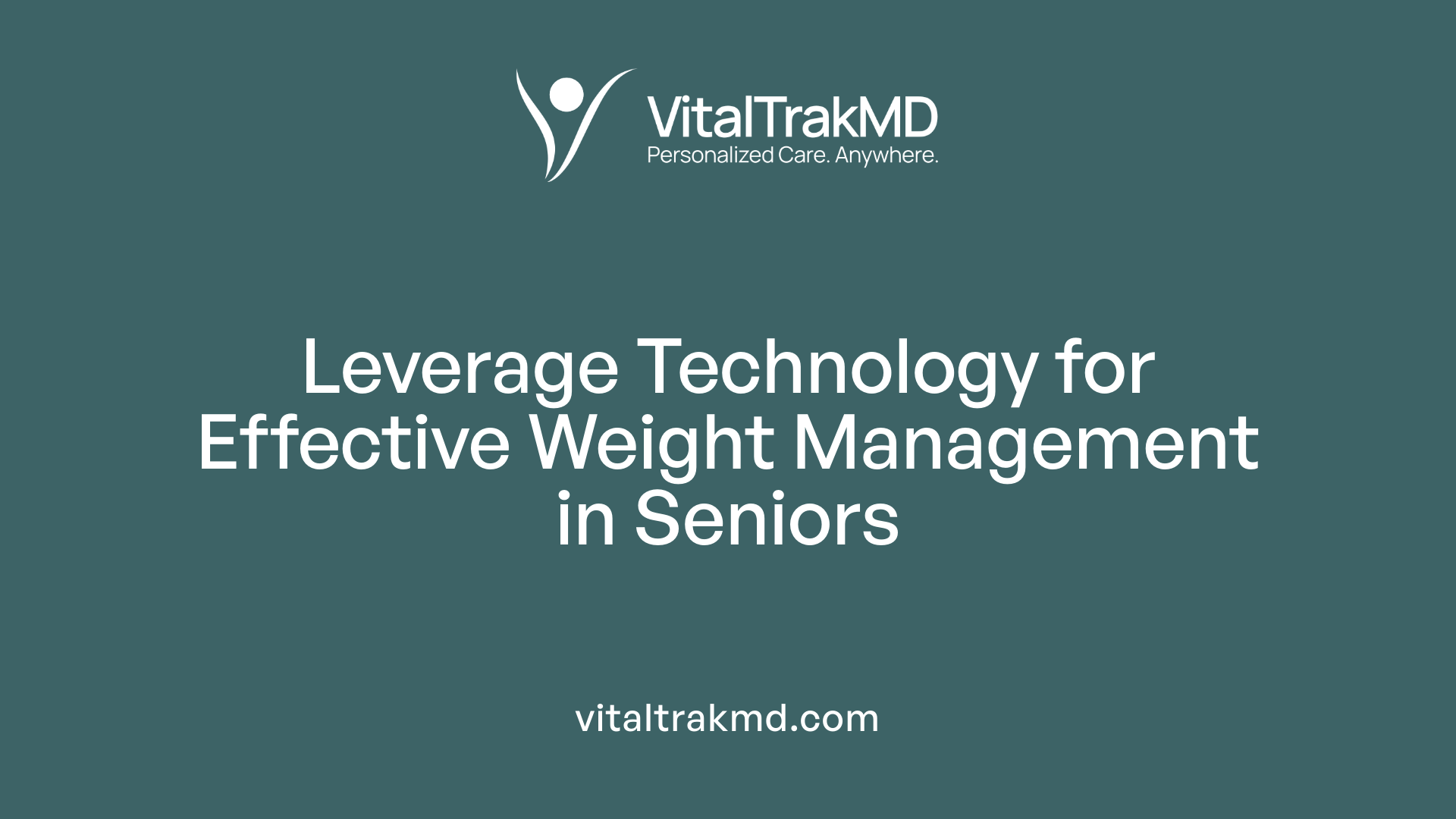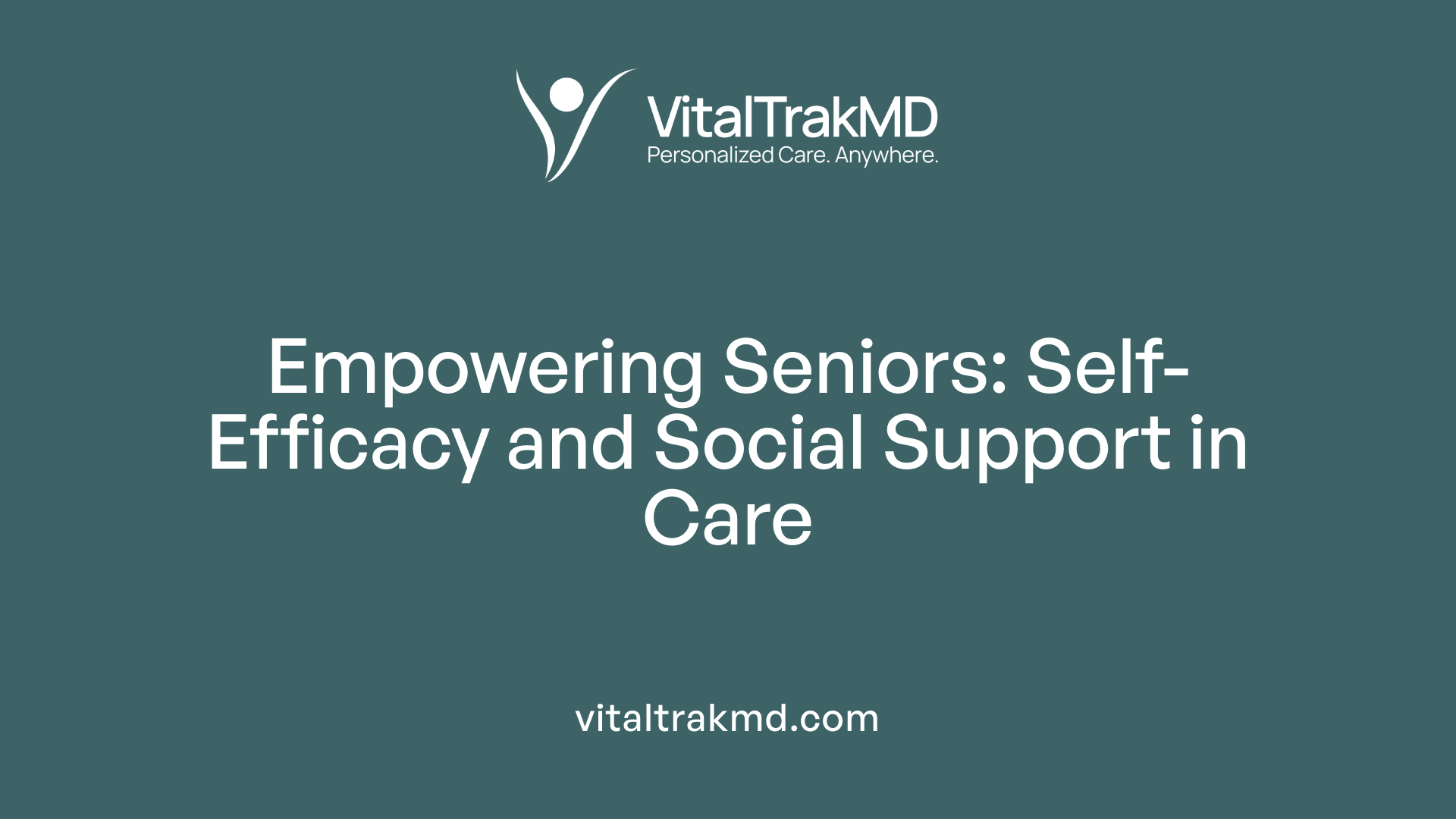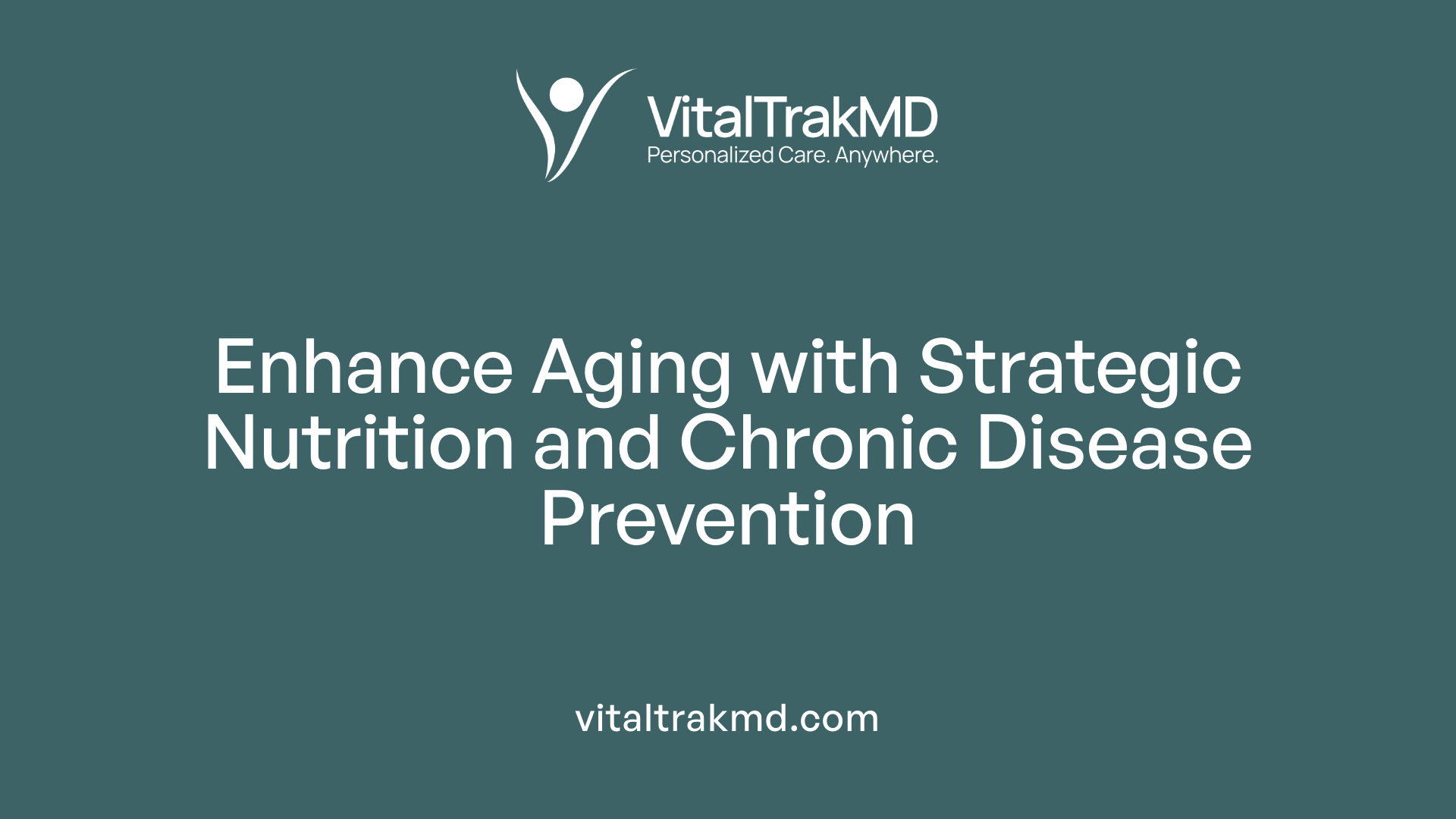How Hybrid Care Programs Adjust to Changing Senior Needs

Meeting the Evolving Needs of Seniors Through Hybrid Care
As the senior population grows and their healthcare needs become increasingly complex, hybrid care programs are emerging as a versatile solution. These programs, which blend in-person and digital methods, are particularly effective in addressing chronic conditions, nutritional challenges, and frailty among older adults. By combining technology with personalized care, hybrid models adapt continuously to meet seniors' changing wellness and weight management requirements, especially in a post-pandemic world.
Hybrid Care: Combining Technology and Traditional Support for Seniors
What are hybrid care programs and what advantages do they offer?
Hybrid care programs blend traditional in-person healthcare with virtual and digital tools. This integrated approach leverages strengths of both methods: the personal touch and detailed assessment capabilities of face-to-face visits, along with the accessibility, convenience, and continuous monitoring enabled by technology.
For seniors managing complex health issues like cardiovascular risks, diabetes, or frailty, hybrid models offer significant benefits. They promote sustained engagement through personalized support, increase adherence to self-care, and accommodate mobility or pandemic-related restrictions. Evidence shows hybrid interventions improve diet quality, weight management, and clinical outcomes over time.
How are in-person and virtual care integrated?
Hybrid models typically combine scheduled in-person assessments with ongoing remote interactions. For example, participants attend initial physical exams or multidisciplinary programs in person, such as the "Why WAIT" 12-week initiative, then continue receiving telehealth coaching, wireless monitoring (like scales and continuous glucose monitors), and tailored digital education.
Regular virtual check-ins reinforce behavioral changes, provide accountability, and allow clinicians to adjust care plans remotely. This flexibility maximizes accessibility and encourages sustained lifestyle modifications, crucial for older adults.
How is telehealth and IT technology used to manage senior health?
Telehealth and IT platforms enable seamless communication between patients and providers. Electronic health records (EHR) automate enrollment and data collection, while wireless devices transmit vital information in real-time to EHR systems for timely interventions.
Customized digital messaging and nurse coaching foster motivation and personalized guidance. Importantly, telehealth eases barriers related to geography or mobility, allowing seniors to maintain consistent care while reducing clinic visits.
In summary, hybrid care programs present a viable, scalable solution that merges technology with personalized healthcare to address the unique needs of aging populations, enhancing health outcomes and quality of life.
Self-Care Education and Nutritional Improvements in Hybrid Programs
How does the Teach-Back method combined with digital education enhance nutritional self-care?
The Teach-Back method integrated with digital education creates a hybrid self-care program that effectively empowers patients with chronic conditions to better manage their nutrition. This approach involves interactive learning where patients repeat information back to educators, ensuring comprehension, paired with accessible digital resources for ongoing support and information reinforcement.
What long-term improvements in diet habits have been observed?
Participants in such hybrid programs have shown remarkable improvements over time. Notably, the proportion of individuals consuming unhealthy diets fell dramatically from 98.67% to 49.34%. Furthermore, adherence to healthy diets increased from 0% at baseline to 13.33%, signifying positive shifts in eating behaviors that are sustained long-term.
In what ways does improved nutrition impact the management of chronic diseases?
Enhanced nutritional self-care through hybrid education programs has a tangible impact on chronic disease management. Significant reductions in critical cardiovascular risk factors have been observed, including lower systolic and diastolic blood pressure, decreased fasting blood glucose levels, and a reduction in body mass index (BMI). These improvements contribute to better overall health outcomes and can reduce complications associated with chronic illnesses.
By combining personalized, interactive education with digital tools, hybrid programs support sustained dietary improvements and positively influence chronic disease progression, reinforcing the importance of self-care in managing health among patients with long-term conditions.
Cardiovascular Health Gains Through Hybrid Lifestyle Interventions
Reduction in Blood Pressure and Blood Glucose Levels
Hybrid lifestyle interventions have demonstrated significant cardiovascular benefits, particularly in lowering critical risk factors in patients with chronic conditions. After 12 months, participants showed notable decreases in systolic blood pressure, from an average of 142.21 mmHg down to 132.22 mmHg, and diastolic blood pressure, from 104.70 mmHg to 92.16 mmHg. These trends are vital as reducing blood pressure substantially lowers the risk of heart disease and stroke.
Alongside blood pressure improvements, fasting blood glucose levels dropped from 212.66 mg/dL to 151.48 mg/dL, indicating better glucose control in patients with diabetes or prediabetes. This is critical in managing and preventing complications associated with metabolic disorders.
BMI Reduction Trends
Participants also experienced a meaningful reduction in body mass index (BMI), decreasing from 27.91 kg/m² to 25.32 kg/m² within the intervention period. This shift reflects progress from overweight to a healthier weight classification, which positively impacts cardiovascular health, mobility, and overall well-being.
More than 60% of enrolled patients achieved some degree of weight loss by six months, with 15% reaching a clinically significant weight loss of 5% or more. Such results underscore the efficacy of hybrid approaches combining digital tools with personalized coaching for sustainable weight management.
Role of Continuous Monitoring and Coaching
A critical element of these interventions is the integration of continuous monitoring technologies, such as wireless scales that transmit data directly to electronic health records (EHR). This real-time feedback allows healthcare providers to track progress accurately and intervene promptly when necessary.
Coupled with tailored nurse coaching and weekly personalized messages, this model enhances patient engagement and adherence. The hybrid design merges the convenience of remote digital education and monitoring with in-person accountability, supporting better long-term lifestyle changes.
Together, these comprehensive strategies within hybrid programs offer a scalable solution to address cardiovascular risk factors in older adults, merging technological innovation with personalized care for improved health outcomes.
Weight Management Success Via IT-Enabled Lifestyle Support

How does EHR messaging help engage patients in weight management programs?
Electronic health record (EHR) messaging plays a crucial role in engaging patients with a body mass index (BMI) of 27 kg/m² or higher and at least one cardiovascular risk factor. It allows healthcare providers to reach eligible patients efficiently, inviting them to participate in lifestyle support programs. This automated enrollment streamlines recruitment and ensures personalized contact, enhancing patient participation rates.
What technology supports patient self-monitoring in these programs?
Wireless scales integrated with EHR systems allow patients to monitor their weight daily with seamless data transmission to their healthcare providers. This real-time monitoring facilitates accurate tracking and timely interventions. Additionally, patients can access fitness coaching resources through dedicated platforms, providing guidance and motivation to support physical activity and lifestyle changes.
How do tailored messaging and nurse coaching improve patient outcomes?
Customized lifestyle support (CLS) delivers weekly tailored messages designed to address individual patient needs and challenges. This tailored communication, combined with nurse coaching, increases patient engagement by providing expert advice, addressing concerns, and reinforcing behavior change. The personalized approach helps patients stay motivated and adhere to their weight management goals.
What are the weight loss outcomes of these IT-driven interventions?
Approximately 60% of patients enrolled in these hybrid IT-enabled programs achieved some weight loss within six months. Notably, 15% of participants managed to lose at least 5% of their baseline body weight, a clinically significant milestone associated with improved cardiovascular health. These outcomes highlight the effectiveness of integrating technology with personalized coaching to support sustainable lifestyle changes in older adults.
Sustainability and Stakeholder Engagement in Hybrid Programs

How do hybrid programs ensure acceptability and credibility?
Hybrid care models blend in-person and digital methods to offer flexible, effective healthcare, which enhances their acceptability among patients and providers. By maintaining face-to-face accountability alongside virtual access, these programs balance convenience with trusted clinical interaction, fostering credibility. Moreover, the integration of telehealth components within existing primary care systems supports both continuity and adaptability, making hybrid programs sustainable and credible in varied healthcare settings.
What role do patients, caregivers, and healthcare providers play in these programs?
Stakeholder involvement is central to the hybrid model's success. Patients benefit from personalized approaches that respect their individual needs and lifestyles, including caregiver support, which reinforces self-care and improves outcomes. Caregivers contribute by providing social support that strengthens intervention adherence. Healthcare providers guide these interventions, ensuring medical supervision is continuous and adaptive to changing patient conditions. This collaborative dynamic builds a support network essential for long-term sustainability.
What strategies come from stakeholder input?
Hybrid programs leverage insights from all stakeholders to tailor interventions effectively. Strategies include using automated electronic health record (EHR) enrollment and messaging systems for seamless patient engagement, and incorporating weekly tailored communications to boost participation. Stakeholder-derived approaches prioritize stakeholder preferences, technological accessibility, and culturally sensitive care. This integrated input shapes programs that are feasible, acceptable, and sustainable, emphasizing ongoing feedback and adaptation to meet the evolving needs of older adults and chronic condition management.
Personalized Nutrition Plans Addressing Age-Related Changes
How Do Metabolic Changes Impact Aging and Nutrition?
As people age, their metabolism naturally slows down, resulting in reduced energy expenditure and changes in how the body processes nutrients. This metabolic shift can make maintaining a healthy weight more challenging and increase vulnerability to chronic diseases like diabetes and heart disease. A personalized nutrition plan for seniors must take these changes into account, tailoring calorie intake and nutrient density to support overall health without promoting unwanted weight gain.
Why Is Muscle and Bone Health a Focus in Senior Nutrition?
With advancing age, muscle mass and bone density tend to decline—a process known as sarcopenia and osteoporosis, respectively. Both conditions increase the risk of falls, fractures, and frailty. Nutrition plans for older adults emphasize adequate protein intake and nutrients such as calcium and vitamin D to slow muscle loss and strengthen bones. Engaging in physical activity alongside nutrition helps preserve muscle function and supports long-term mobility.
Which Vital Nutrients Are Essential in a Senior Diet?
Older adults require specific vitamins and minerals to maintain health and prevent disease. Key nutrients include:
- Calcium and Vitamin D: Critical for bone integrity and reducing osteoporosis risk.
- Vitamin B-12: Important for neurological function and blood formation.
- Fiber: Helps digestion and manages blood glucose levels.
- Protein: Supports muscle maintenance and repair.
Incorporating lean proteins like eggs, nuts, and legumes, as well as fiber-rich fruits and vegetables, sustains satiety and optimizes nutrient intake.
By addressing age-related metabolic shifts, prioritizing muscle and bone health, and ensuring vital nutrient consumption, customized nutritional strategies empower seniors to manage weight effectively and enhance their quality of life.
Role of Physical Activity in Senior Weight and Wellness Programs
How does physical activity help maintain cardiovascular health and bone density in seniors?
Physical activity is vital for seniors as it strengthens the heart and improves circulation, which helps maintain cardiovascular health. It also promotes bone density, reducing the risk of osteoporosis and fractures. Regular exercise supports muscle strength, which complements bone health and helps maintain mobility.
In what ways does exercise enhance mental health and independence among older adults?
Engaging in physical activity boosts mental well-being by reducing symptoms of depression and anxiety. Exercise improves cognitive function and resilience, fostering greater independence in daily activities. This overall enhancement supports seniors in maintaining their quality of life and social engagement.
What types of exercises are recommended for seniors?
For older adults, recommended exercises include:
- Walking: A low-impact activity that improves stamina and cardiovascular fitness.
- Strength training: Helps counteract muscle loss (sarcopenia) and supports metabolic health.
- Balance exercises: Activities like tai chi or simple standing balance routines reduce fall risk and improve coordination.
Incorporating these exercises into hybrid care programs ensures a comprehensive approach to senior wellness, facilitating sustainable weight management and overall health improvements.
Behavioral Strategies Supporting Sustainable Weight Management
Portion Control and Mindful Eating
Portion control is a fundamental strategy in sustainable weight management, helping older adults avoid overeating by recognizing appropriate serving sizes. Mindful eating complements this by encouraging individuals to pay full attention to the eating experience, savoring flavors, and acknowledging hunger and satiety cues. These practices foster healthier relationships with food, aiding in gradual and lasting weight loss.
Stress Management Techniques
Managing stress is crucial as chronic stress can trigger overeating and poor food choices. Techniques such as deep breathing exercises, meditation, and gentle physical activity not only reduce stress but also support emotional well-being. Incorporating stress management helps seniors maintain dietary goals and overall health.
Long-term Adherence to Lifestyle Adjustments
Longevity of behavior change requires practical, incremental lifestyle modifications rather than drastic shifts. Encouraging small adjustments—like incorporating more fiber-rich foods and daily walks—builds sustainable habits. Coupled with ongoing support and self-efficacy enhancement, this approach enhances adherence and addresses challenges related to aging.
Behavioral strategies are essential for empowering older adults to maintain healthy weight and nutrition, ultimately improving quality of life and reducing risk for chronic diseases.
Ensuring Medical Safety and Oversight in Weight Loss Programs
Monitoring Medication Interactions and Metabolic Changes
Weight loss programs for older adults require careful medical supervision because seniors often take multiple medications. Weight loss and dietary changes can affect how these medications work, potentially leading to adverse effects. Healthcare providers must monitor for interactions to adjust treatments promptly and safely. Additionally, metabolic changes that occur with aging can influence weight loss effectiveness and health outcomes, further emphasizing the need for continuous medical oversight.
Regular Evaluations to Prevent Nutrient Deficiencies
Older adults are vulnerable to nutrient deficiencies due to shifting dietary needs and potential absorption issues. Weight loss programs must include regular evaluations to ensure that essential nutrients like calcium, vitamin D, vitamin B-12, fiber, and protein are maintained at healthy levels. These assessments help prevent complications such as osteoporosis, anemia, and cognitive decline, supporting overall health during weight management efforts.
Risks Associated with Rapid Weight Loss in Seniors
Rapid weight loss, especially greater than 1-2 pounds per week, poses significant health risks for seniors, including muscle loss, decreased bone density, and weakened immunity. A slower, steady weight loss approach is recommended to minimize these dangers. Careful medical guidance ensures that weight loss goals are realistic and safe, promoting sustainable results without compromising health.
In summary, medical supervision is vital in elderly weight management to navigate medication interactions, monitor metabolic changes, prevent nutrient deficiencies, and avoid the pitfalls of rapid weight loss. This comprehensive approach supports both safety and effectiveness in programs tailored for older adults.
The Critical Role of Sleep in Senior Metabolism and Weight Control
How Does Sleep Affect Hormonal Regulation of Hunger and Satiety in Seniors?
Sleep plays a vital role in regulating hormones that control hunger and fullness, which is especially important for older adults managing their weight. Poor sleep can disrupt hormones like ghrelin and leptin—ghrelin increases appetite while leptin signals fullness. Inadequate rest tends to raise ghrelin levels and lower leptin, leading to increased hunger and a higher risk of overeating, complicating weight management efforts in seniors.
What Is the Impact of Sleep on Cognitive Health for Older Adults?
Adequate sleep is strongly linked to maintaining cognitive function in seniors. It supports memory consolidation, attention, and problem-solving skills—abilities crucial for sustaining independent living and managing daily tasks, including meal planning and self-care. Poor sleep not only impairs cognition but may also contribute to mood disorders, further compromising overall wellness and adherence to healthy habits.
How Can Sleep Hygiene Be Integrated into Wellness Programs for Older Adults?
Incorporating good sleep practices into senior wellness programs enhances metabolic regulation and overall health. Effective strategies include establishing consistent bedtimes, creating relaxing pre-sleep routines, reducing screen time before bed, and optimizing the sleep environment for comfort and minimal disturbances. Combining sleep hygiene education with personalized nutrition and gentle physical activity routines creates a holistic approach that supports sustainable weight control and cognitive vitality in older adults.
Integrating Multi-Domain Interventions to Reverse Frailty

What tools assess functional status and frailty in older adults?
Comprehensive geriatric assessments focus heavily on functional status to determine an elder's frailty, using validated tools like the Frail-VIG Scale and Short Physical Performance Battery (SPPB) scores. These assessments provide quantitative measures of physical and cognitive ability, essential for tailoring care plans.
How do multi-domain interventions target physical, nutritional, cognitive, and mental health?
Effective interventions simultaneously address key frailty domains:
- Physical: Exercises tailored for older adults to improve strength, balance, and mobility.
- Nutritional: Personalized dietary plans that ensure vital nutrients such as calcium, vitamin D, and lean proteins to counteract muscle loss and bone density decline.
- Cognitive: Strategies to maintain or enhance cognitive functioning through mental stimulation and social activities.
- Mental: Support for emotional well-being, including stress management and social connectedness.
These domains are interlinked, and multi-domain approaches aim to improve overall resilience and functional independence.
What have community-based hybrid interventions achieved?
In community trials merging in-person and telehealth methods, older adults receiving hybrid care showed impressive results. For example, a median frailty index dropped from 0.36 to 0.20 after intervention, signifying substantial frailty reversal. Improvements in physical function, nutrition, cognition, and mental health domains were directly linked to better self-care behaviors supported by caregiver involvement.
This hybrid model emphasizes self-efficacy by empowering elders through performance feedback, social interdependence via family support, and seamless integration of technological and traditional care modes. The flexibility and adaptability of such programs make them feasible for diverse community settings, promising broad applicability to improve senior health outcomes.
Enhancing Self-Efficacy and Social Support in Senior Care

How does self-efficacy theory improve elder self-care practices?
Self-efficacy theory plays a pivotal role in empowering older adults to better manage their health. It suggests that seniors develop stronger self-care capabilities through four main mechanisms: successful performance outcomes, observation of others’ experiences, verbal encouragement from caregivers, and physiological feedback. When elders experience success in managing their health, feel supported by family or health professionals, and receive positive reinforcement, they build confidence in their ability to maintain their own care routines.
What role does social interdependence play among family caregivers?
Social interdependence theory highlights the importance of positive collaboration among family members in caregiving roles. When family caregivers work together and support each other, this collective effort fosters a nurturing environment that improves the continuity and quality of care for seniors. The emotional and practical support between caregivers contributes to sustained motivation and enhanced health outcomes for older adults.
Why is caregiver reinforcement critical for successful senior care interventions?
Caregiver reinforcement is essential in ensuring that seniors remain engaged with their care plans. Reinforcement includes regular encouragement, personalized assistance, and consistent communication from caregivers, which help older adults adhere to lifestyle changes and medical recommendations. Studies have shown that interventions supported by caregiver involvement yield significant improvements in elders’ functional status and frailty measures, demonstrating that caregiver engagement is a cornerstone of effective senior care.
Together, these aspects form the foundation of successful hybrid care models for older adults, combining self-efficacy enhancement with strong social support networks to promote independence, health, and resilience in aging populations.
Scalability and Adaptability of Hybrid Models Across Communities
Continuum-of-Care Approaches
Hybrid care models emphasize providing a seamless continuum-of-care that blends in-person and virtual elements. This integrated approach ensures ongoing support for patients, particularly older adults managing chronic conditions such as obesity, diabetes, and cardiovascular risk factors. By combining traditional face-to-face interactions with telehealth and digital education, these models maintain accountability and measurement accuracy while increasing accessibility.
Adaptation to Varying Community Settings
One of the major strengths of hybrid models is their flexibility to be tailored for diverse community contexts. Whether deployed in urban clinics, rural health centers, or home-based care, these programs adjust components such as the level of technology use, caregiver involvement, and health coaching intensity. Stakeholder involvement during development promotes culturally sensitive and credible interventions, improving acceptance and engagement across different demographics.
Potential for Broader Application and Sustainability
Hybrid models demonstrate promising potential for broader application due to their scalability and compatibility with existing primary care and IT infrastructures. Automated processes, such as EHR-based enrollment and data collection, enhance operational efficiency. The combination of digital tools with personalized coaching supports sustainable health behavior changes long-term. Ultimately, these adaptable hybrid interventions offer a viable solution for managing chronic diseases among older adults and facilitating wellness during public health disruptions like the COVID-19 pandemic.
Hybrid Intensive Lifestyle Intervention for Diabetes and Obesity
Why WAIT 12-week program design
The Why WAIT program is a structured 12-week multidisciplinary initiative designed to help patients manage diabetes and obesity through an intensive lifestyle intervention (ILI). It integrates expertise from various healthcare professionals to tailor weight loss and glycemic control strategies effectively.
Hybrid combination of in-person and virtual sessions
This program adopts a hybrid model that skillfully combines in-person and virtual sessions. This setup offers flexibility to participants while maintaining the essential accountability and accuracy associated with face-to-face meetings. By preserving direct interactions alongside remote engagement, the hybrid model ensures consistent monitoring and personalized support.
Outcomes in weight loss and glycemic control
Participants in the hybrid Why WAIT program experienced an average weight loss of about 8% of their baseline body weight. Additionally, there was a notable reduction in HbA1c levels by approximately 0.6%, indicating significant improvements in blood glucose management. These outcomes were comparable to results seen with exclusively in-person or virtual programs.
Continuous glucose monitoring (CGM) data from the program showed similar time-in-range glucose levels across different delivery models, with some evidence suggesting enhanced glycemic stability under the hybrid approach. This indicates the hybrid model's effectiveness in supporting sustainable diabetes management alongside obesity treatment.
The combination of in-person and virtual components in the Why WAIT program allows for scalability and greater accessibility, addressing barriers faced by many older adults managing complex metabolic conditions in the post-pandemic era.
Post-Pandemic Advantages of Hybrid Care for Seniors
How does hybrid care improve flexibility and accessibility for seniors?
Hybrid care models uniquely blend in-person and virtual healthcare sessions, significantly improving flexibility for older adults managing chronic conditions like diabetes and obesity. This flexibility allows seniors to engage in care routines from their own homes when necessary while also attending face-to-face appointments that are crucial for accurate measurements and assessments. Enhanced accessibility means fewer barriers related to transportation or mobility, especially important for those with limited physical capabilities or living in rural areas.
How is face-to-face accountability maintained in hybrid care?
Despite leveraging virtual technology, hybrid models prioritize maintaining elements of in-person accountability to ensure quality care outcomes. Regular in-person sessions are scheduled strategically alongside virtual check-ins, preserving essential personal interactions between patients and healthcare providers. This balance supports accurate clinical measurements, strengthens patient-provider connections, and aids motivation, which in turn helps sustain weight loss and glycemic control among seniors.
Why is hybrid care suited to the evolving healthcare environment?
The COVID-19 pandemic catalyzed rapid shifts in healthcare delivery, underlining the need for adaptable and sustainable care models. Hybrid care addresses this by combining the strengths of telehealth with traditional in-person approaches, allowing continuous care even during healthcare disruptions. This adaptability meets the changing demands of older adults, supporting long-term wellness while integrating smoothly with existing primary care and electronic health record systems. Furthermore, it enhances engagement through tailored messaging and coaching, which are critical in managing complex older adult health needs post-pandemic.
Addressing Nutritional Challenges Amid Food Insecurity
How Does Food Insecurity Affect Older Adults?
Food insecurity significantly impacts the nutritional status and overall health of older adults. This issue is especially prevalent among low-income seniors, minority groups, and those living in rural areas. Limited access to sufficient, nutritious food can exacerbate chronic conditions such as hypertension, diabetes, and arthritis, which are commonly seen in aging populations. Without adequate nutrition, older adults face increased risks of muscle loss, weakened immunity, and reduced quality of life.
Why Is Culturally Sensitive Nutrition Care Important for the Elderly?
With the aging population becoming more diverse, nutrition care programs must be culturally sensitive and individualized. Different cultural backgrounds influence dietary habits, food preferences, and health beliefs. Tailoring nutrition education and interventions respectfully enhances engagement, adherence, and overall effectiveness in improving diet quality. Understanding these nuances helps healthcare providers address unique barriers and foster better health outcomes.
How Do Public Food Assistance Programs Support Older Adults?
Public food assistance programs play a crucial role in improving food access for older adults facing insecurity. Programs such as the Supplemental Nutrition Assistance Program (SNAP), Older Americans Act (OAA) nutrition services, and USDA initiatives provide nutritious foods and meals to low-income seniors. These supports help bridge gaps in food availability, ensuring older adults can maintain healthier diets and reduce risks linked to malnutrition.
Promoting awareness and integration of these resources within hybrid care models can further enhance nutritional support and improve long-term health and wellbeing for at-risk elderly populations.
Comprehensive Nutrition’s Role in Aging Health and Chronic Disease Prevention

How Does Nutrition Influence Chronic Diseases in Older Adults?
Nutrition plays a vital role in managing and preventing chronic diseases common in older adults, such as hypertension, arthritis, heart disease, diabetes, and cancer. Proper nutritional care can reduce risk factors, improve health outcomes, and positively impact quality of life and longevity.
What Are the Essential Nutrients for Aging Health?
Certain nutrients become especially important with age:
- Protein: Supports muscle maintenance, counters muscle loss (sarcopenia), and improves functional health.
- Calcium and Vitamin D: Crucial for bone health, helping prevent osteoporosis.
- Vitamin B-12: Important for neurological function and blood formation.
Older adults require adequate intake of these to maintain physical and cognitive health.
What Are the Guidelines for Improving Diet Quality in Seniors?
Following a balanced dietary pattern is key. Recommended guidelines emphasize:
- High intake of fruits, vegetables, and whole grains to provide fiber and antioxidants.
- Lean proteins such as eggs, nuts, and legumes to support satiety and muscle health.
- Limiting processed foods and unhealthy fats to reduce cardiovascular risk.
Public programs and culturally sensitive interventions play a role in improving access and adherence to these dietary recommendations among diverse older populations.
The Future of Hybrid Care in Supporting Senior Wellness
Hybrid care programs represent a transformative approach to senior health management by seamlessly combining technology with personalized, multidisciplinary support. These adaptable models address the dynamic physical, nutritional, psychological, and social needs of older adults, helping to improve chronic disease outcomes, promote healthy weight, reduce frailty, and enhance overall quality of life. As the healthcare landscape evolves, particularly in response to recent global challenges, embracing hybrid care will be essential to empower seniors and their caregivers alike, ensuring comprehensive, sustainable wellness solutions for years to come.
References
- Sustainable effects of a hybrid self-care education program ...
- Hybrid Health IT and Telehealth–Delivered Behavioral Weight ...
- Weight Loss Programs for Older Adults
- Hybrid model of care for older persons for improvement of ...
- Hybrid model of intensive lifestyle intervention is potentially ...
- Weight Loss: Safe, Effective Strategies for Older Adults
- Food and Nutrition for Older Adults: Promoting Health and ...
Recent articles
Want to Feel Better and Live Healthier?
Join hundreds of patients taking control of their health with personalized care that fits their life – not the other way around.
Rated 4.8/5 by 32+ customers







